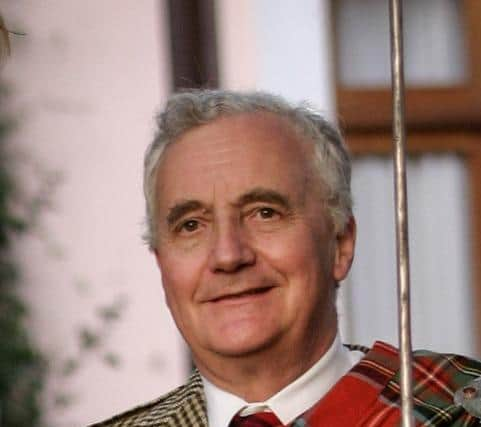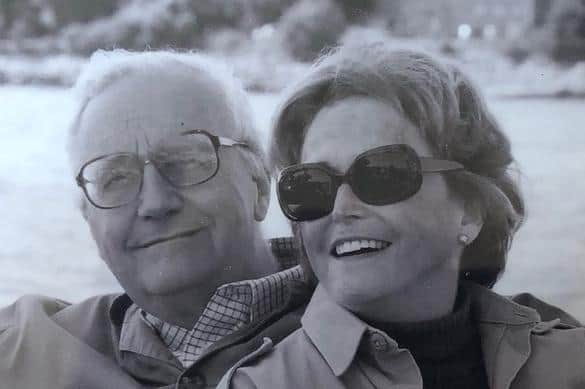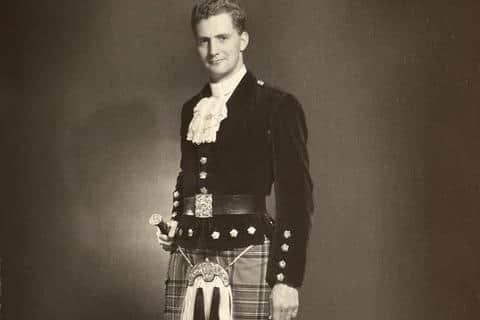Obituaries: Diarmaid Douglas-Hamilton, physicist, inventor, and enthusiastic mountaineer
Diarmaid Hugh Douglas-Hamilton, physicist, inventor, entrepreneur, pilot and mountaineer died unexpectedly at his office in Beverly, MA., on 19 January, 2023, at the age of 82.
He was the co-founder and Chief Technology Officer of Hamilton Thorne Inc., a company building advanced laser systems for human and animal reproductive technology. He held, often with Thomas G Kenny, some two-dozen patents for devices and systems related to that work.
Advertisement
Hide AdAdvertisement
Hide AdIn addition to his work as a physicist, Diarmaid was an enthusiastic mountaineer who climbed often in the Alps, the Cuillins of Skye and numerous peaks in the Cape of Good Hope in South Africa. He held a pilot’s licence and flew many thousands of miles in his Cessna 172. In one adventure he and his wife Meg flew a new Cessna 185 from Paris to Nairobi, Kenya, to deliver the plane to his brother, Iain Douglas-Hamilton, a zoologist who was fighting to save elephants from the ivory trade. On the last leg of the journey, as they took off from Kidepo national park in Uganda, a Kongoni antelope ran onto the runway and hit the plane’s landing gear. They continued their journey to Nairobi and skilfully eased the crippled aircraft to touch down gently on one leg before the damaged leg touched the ground. The plane was damaged but reparable, later becoming a critical tool in anti-poaching missions, and both crew emerged uninjured from the crash. In another expedition he and Meg rented a seaplane and flew to Baffin Island, north of the Arctic circle in Canada, landing in a remote fjord hundreds of miles from the nearest human being, where they climbed the formidable Mt. Asgard.


Diarmaid was born in wartime Britain in Wiltshire, on 17 June 1940, the day that France fell. His father, Lord David Douglas-Hamilton, was the squadron leader of 603 City of Edinburgh Squadron, which flew Spitfires in some of the heaviest aerial fighting of the war. These missions were later immortalised in the book Air Battle for Malta: The Diaries of a Fighter Pilot by Lord James Selkirk of Douglas. David and his three brothers, including the Duke of Hamilton, were all on active service in the RAF at the same time.
Later, Diarmaid’s father flew the fast twin-engine Mosquito on unarmed photo reconnaissance sorties over occupied Europe. In 1944 his plane was badly shot up on a mission over Southern France. He managed to fly the damaged plane on one engine back to RAF Benson in England, his home base, but the second engine failed just short of the runway. Both he and his navigator were killed.
Diarmaid’s mother, Prunella Stack, was a pioneer of women’s physical fitness in England, heading the Women’s League of Health and Beauty, that she later set up also in South Africa, where she moved with her second husband, Alfred Albers. Diarmaid lived there for five years with his mother and brother before returning to the UK, where he attended Gordonstoun School before winning a scholarship to Balliol College, Oxford, and graduating with a degree in Physics.
An accident in 1960 saw Diarmaid fall from Switzerland to land in Italy. At a chairlift terminal in the Alps on a skiing holiday with friends, he inadvertently touched a high voltage cable with his ski stick. The shock catapulted him from the viewpoint over a cliff and onto a glacier. He tumbled 1500 feet down a steep ice gully before the horrified eyes of his undergraduate friends, before finally coming to a stop in a snow drift.


Recuperating in South Africa, Diarmaid climbed mountains by day and watched stars by night. He immersed himself in the science of astronomy at the Observatory in Cape Town, then enrolled in a PhD in Astrophysics at Harvard. While at Harvard he was recruited to teach science to artists and other non-scientists, and discovered a talent for explanation that stayed with him for the rest of his life. He was known by family and co-workers as a patient and learned mentor, with a knack for explaining complicated subjects clearly and without condescension, sometimes in a poetical and lyrical way.
When sent a diagram of the interlocked orbits of the planets Venus and Earth by his family, he replied: "I was just thinking about Venus and its orbital peculiarities. Venus actually rotates backwards, unlike all the other planets, and it is Earth’s fault: the tiny tide from Earth has operated over the 40 million miles to Venus and gradually 4 billion years of tiny nudges brought it to the present. It’s a spin orbit resonance. And now sad Venus, our twin but utterly bereft of life, turns and very accurately faces Earth with longing every time they pass, condemned by the gods forever to do so.”
Diarmaid left Harvard to work for the military industrial complex of America (firstly at AVCO Everett Laboratories for 12 years, then at the Eaton Corporation for 5 years), ultimately as a team leader in building what was then one of the largest lasers in the world. This satisfied his urge to support the West during the Cold War. His expertise in powerful laser technology and facility for clear explanation made him valued by senior military people. Although a trusted Brit, he needed high-level security clearance. When asked by the authorities if there was anything that could challenge his loyalty to America he replied “Well, if America was at war with Scotland I would have a problem”, an answer that seemed to please his interlocutors. His loyalty was such that he would not reveal his work even to his curious brother Iain, although he once let slip that “the sudden dis-functioning of a Soviet geostationary satellite over New York was not entirely unconnected with my team’s work”.
Advertisement
Hide AdAdvertisement
Hide AdIn 1983 he married the love of his life, Margaret (Meg) Murray Spencer, an American whose father was a Scot. Diarmaid’s mother, Prunella, always said that Diarmaid was so strongly attached to his father that he bore the scars of his death all his life until he married Meg.


Together he and Meg became co-founders of Hamilton Thorne Inc, a company that sold products based on his inventions. One, known as LYKOS & LYKOS-DTS, integrated lasers into the objective lens of a microscope, and is widely used to manipulate embryos and immature egg cells in women, helping fertility treatments and the avoidance of genetic disease.
Another was the ‘motility analyser’ that shines lasers through a solution of living sperms to assess the motion and health of these reproductive cells. The machines are not only sold to medical clinics around the world but also to zoos, where they are used to enhance the breeding success of endangered species. Another related invention – this time created in collaboration with horse-loving Meg – was called the Equitainer. This device precisely controls temperature and is used to ship valuable horse semen to horse breeders sometimes delivered in their own plane.
Diarmaid and Meg’s strong attachment to Scotland grew deeper over the years with frequent trips to the Isle of Raasay where they had a small croft house overlooking the sea with a view of the Cuillin mountains where they could walk over the moors and often entertain their Scottish cousins.
Meg survives him, as do his adored stepchildren Matthias and Arabella Plum, their spouses Coco Plum and Jeffrey Goldberg, and two grandsons. He is also survived by his younger brother Iain and his wife Oria, his two nieces Saba and Mara and their six children, as well as by the large extended family on three continents descended from Diarmaid’s grandfather, the 13th Duke of Hamilton.
Obituaries
If you would like to submit an obituary (800-1000 words preferred, with jpeg image), or have a suggestion for a subject, contact [email protected]
Subscribe
Subscribe at www.scotsman.com/subscriptions